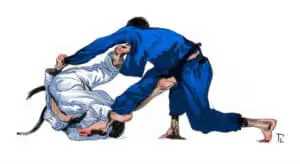BJJ is an addictive sport which is great fun. You recognize this and want to give it a go. However you may be a bit on the older side or have some pre existing injuries and you want to know if BJJ is for you. We will go show you what you need to know about training BJJ with bad knees and other injuries.
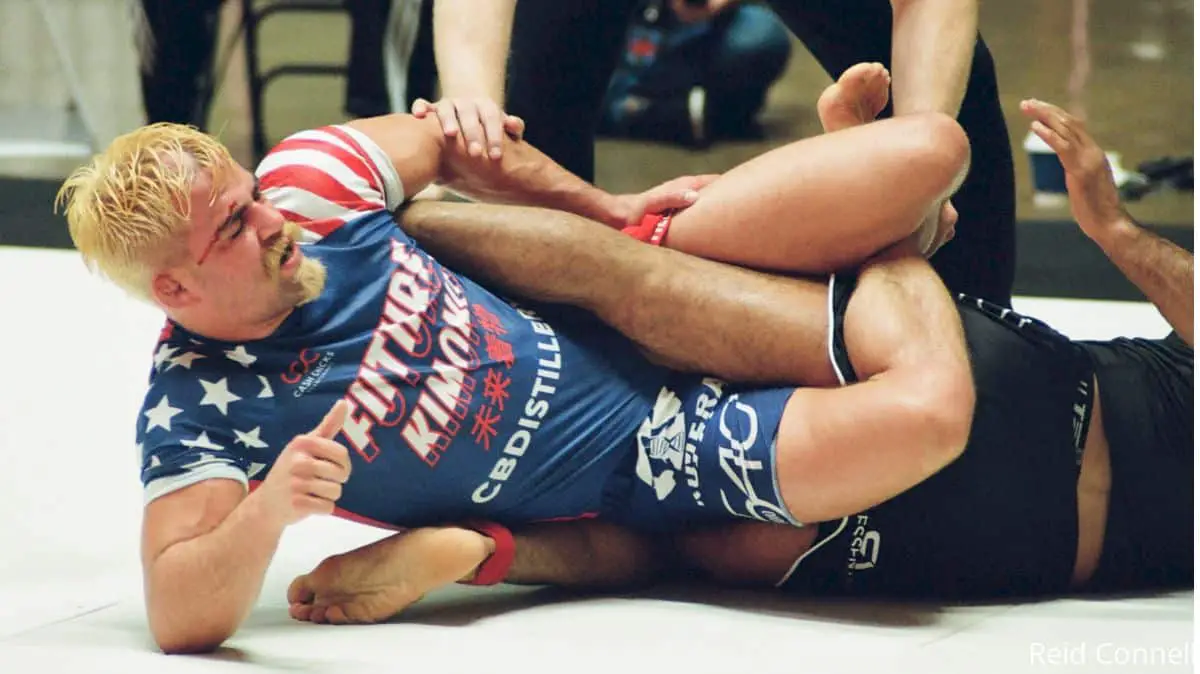
Can you do Jiu Jitsu with bad knees? Yes, you can do Jiu Jitsu with bad knees. As long as you can perform basic movements such as squatting, bending, kneeling and lunging without too much discomfort you can Jiu Jitsu. The great thing about Jiu Jitsu is the movements can be accommodated to suit your bad knees.
The key to doing Jiu Jitsu with bad knees is not trying to push your body too much. If you stay within your comfort zone and don’t try and force your knee to perform movements you know your knee can’t handle you should be ok.
Are Knee Injuries Common In BJJ?
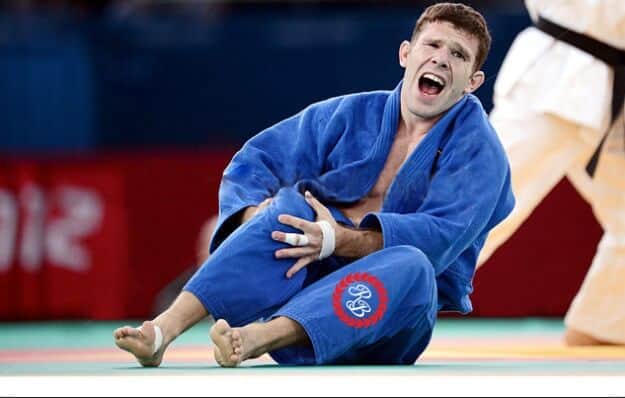
Are knee injuries common in BJJ? No, knee injuries are not common in BJJ. After studying medical records of 8 BJJ tournaments in Hawaii, USA, between 2005 and 2011 researchers found the knee injury rate was 1.4 per 1000 exposures and of all the knee injuries observed only one was serious.
Researchers found BJJ athletes were twice as likely to injure their elbows than their knees in BJJ. This was due to the force that the armbar submission was able to generate and the little time athletes had to tap.
A knee injury rate of 1.4 per 1000 exposures is incredibly low. The researchers found the total injury rate was 9.2 per 1000 exposures. While the injury rate for Judo is 25 per 1000 exposures and for Taekwando it is 79.3 per 1000 exposures.
Can You Do Martial Arts With Bad Knees?
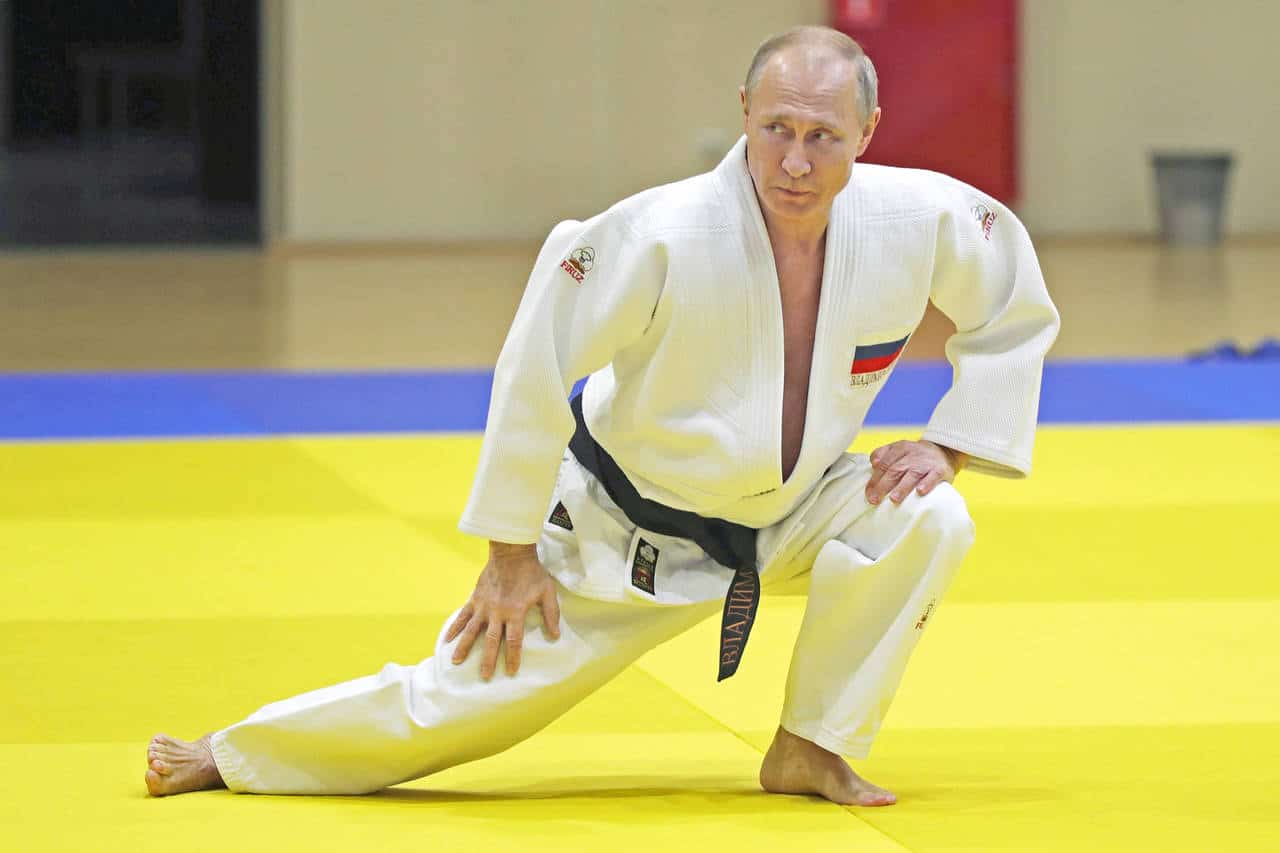
Can you do martial arts with bad knees? Yes, you can do martial arts with bad knees. If you have bad knees it is best to train low impact and soft martial arts such as Tai-chi, Aikido and Qi Gong. High impact martial arts such as Judo, boxing and wrestling can be trained with bad knees however you have to be careful as the risk of injury is high.
If you have bad knees you want to avoid doing martial arts which involve explosive movement where you have to suddenly change direction. You also want to avoid martial arts where there is a risk of your opponent falling on you or twisting your knee. If you have bad knees nearly all grappling sports should be avoided particularly Judo and wrestling.
Unfortunately, knee injuries are common in many martial arts particularly Judo and wrestling. After studying Judo injuries during the Olympic Games in 2008 and 2012, researchers found an average injury risk of about 11–12% with sprains, strains and contusions of the knee being the most common injuries. The major cause of these injuries was being thrown.
Researchers studied wrestlers from the the University of lowa over a 6 year period (N=136) Fifty-one different wrestlers sustained 136 injuries (64 knees). 30 knee injuries per 100 wrestlers occurred per year. Knee injuries comprised 33% of serious wrestling injuries. Athletes were 40 times more likely to injure their knee in competition than in training. The most frequent injuries were patellar bursitis, lateral and medial sprains, and lateral and medial meniscal tears.
Can I Do Kickboxing With Bad Knees?
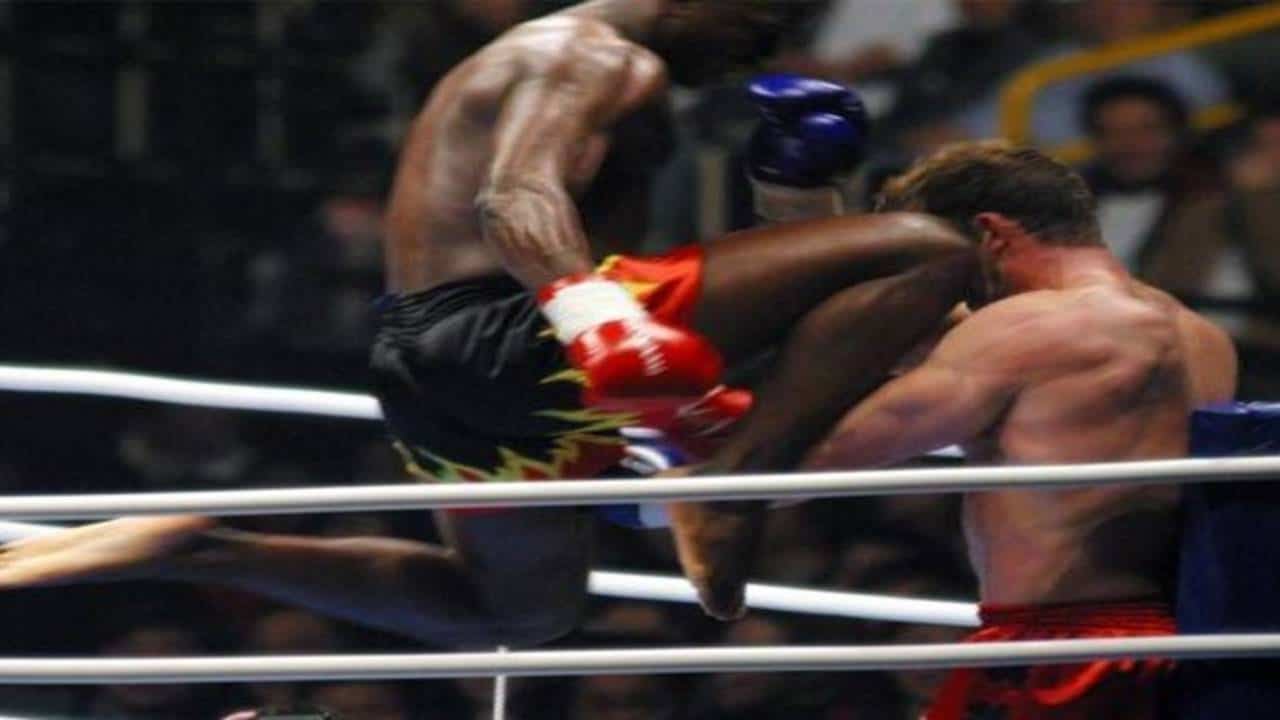
Can I do kickboxing with bad knees? You can do kickboxing with bad knees but you have to be careful as kicking and pivoting places a lot of stress on your knee. Also if you have bad knees you should avoid sparring as there is a high chance you will get kicked in your knee which could lead to an injury.
If you have bad knees you should only train kickboxing for fitness. You should not be sparring or competing. Kicking and punching the pads already places quite a bit of stress on the knees. However sparring and fighting is a different level which puts an intense amount of stress on the knees. Many fighters who have healthy strong knees get their knees buckled after taking a strong leg kick during a fight.
How Do You Protect Your Knees In BJJ?
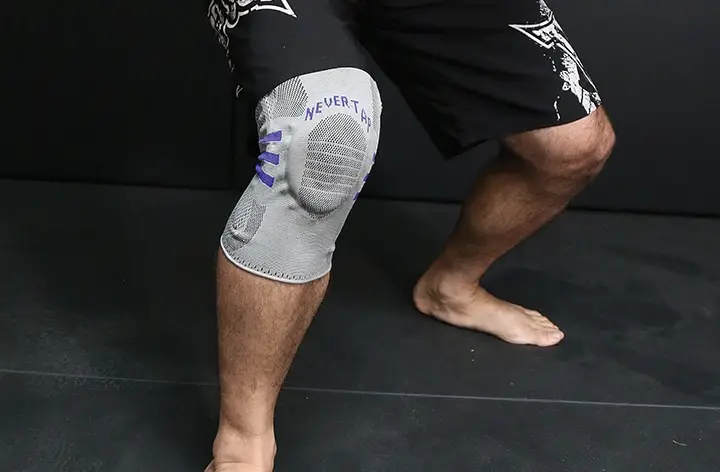
How do you protect your knees in BJJ? The best way to protect your knees in BJJ is to stretch and warm up before training, wear a knee brace, perform the techniques correctly, don’t try to use athleticism to force movements, train with safe partners and manage your training volume and intensity.
Warm Up
Warming up before BJJ decreases your chance of suffering an injury. By Warming up you raise your core temperature giving you higher levels of flexibility and mobility. Unwarm muscles are more likely to be overstretched, torn and broken compared to warm muscles.
A good warm up should last 15-30 mins and should get you sweating. An example of a good warm up for BJJ can be found below:
- Jogging – high knees, kickbacks, roll over shoulders, skipping
- Animals movements – bear walk, crab walk, leopard crawl, frog leap, duck walk
- Basic gymnastic movements – forward roll, backward roll, headspring, cartwheel, handstand
- BJJ movements – bridge, hip escape, granby roll, sit out, shooting takedowns
- Stretching – hips, back, neck, groin, shoulders, wrists, hamstrings, knees
Knee Brace
A good knee brace can offer you a significant amount of support while training BJJ. Of course there is a limit to what a knee brace can do for you while people are flying through the air and trying to strangle you. There is also the problem of finding a knee brace that won’t fall off during intense activity particularly rolling. However I know many people who have bad knees who say Bauerfeind knee braces stay secure during training and allow them to train relatively pain free.
Proper Technique
All the movements in BJJ have been designed to be safe and effective. If you perform the techniques correctly you should not experience pain in your knees or other parts of your body. If you can’t get the hand of a specific movement you should not try to force and it and use power. This is an indication you are doing the technique wrong and you could hurt yourself. Instead take it slow and ask for help if you are stuck. BJJ techniques feel effortless when they are done correctly.
Training Partners
To practice BJJ you need training partners. Unfortunately your progress in BJJ is closely tied to how good your training partners are. If your training partners are terrible this will restrict your ability to improve. Also bad training partners can increase your chances of getting injured. You need to find training partners who are smart, have a good understanding of technique and are able to look after you during training. A good training partner will teach and push you and will be able to help you train around your bad knees.
Training Volume And Intensity
The more and harder you train the more stress you will place on your body. This higher level of stress will place you at a higher risk of injury. If you have bad knees it is not a good idea to train everyday and spar 10 rounds like it is the ADCC finals. You need to pace yourself you don’t want to get injured and be forced to take months off the mat. It is best to be cautious with your training volume and intensity especially until you know what your body can handle. I recommend you start off by going 2-3 times a week and spar 3-5 light-medium rounds per session. After doing that for a few months feel free to slowly increase your training volume and intensity if your body can handle it.
Does Jiu Jitsu Ruin Your Body?

Does Jiu Jitsu ruin your body? If you over train and don’t rehab injuries Jiu Jitsu will ruin your body. However if you train a moderate amount and take cover of your body Jiu Jitsu will strengthen your body as it can help increase muscularity, decrease body fat and increase flexibility.
A lot of high level BJJ athletes have developed chronic injuries and let BJJ ruin their body. This isn’t talked about that much in BJJ circles as the marketing is all about how BJJ is for everybody and its a safe sport, you can go hard everyday and be fine. However as the sport becomes more mature you are hearing more and more stories of different BJJ practitioners who have messed their bodies up from training.
Rickson Gracie can barely train anymore and is on constant pain due to multiple herniated discs in his back. Eddie Cummings was in constant pain and having trouble just getting out of bed in the morning.
It isn’t just BJJ athletes who have messed their bodies up training, many hobbyists have also damaged themselves. Joe Rogan had to stop training due to suffering severe nerve damage in his neck which he claims is from doing head and arm chokes. Sam Harris suffered some serious neck injuries and had to take time off from BJJ.
BJJ has the potential to ruin your body. You have to be smart. Train a few times a week, stretch/warm up, do strength and conditioning, rehab injuries, train with safe training partners and make sure you use correct techniques. You don’t want to be in chronic pain because you trained like an idiot.
Is Jiu Jitsu Hard On Joints?
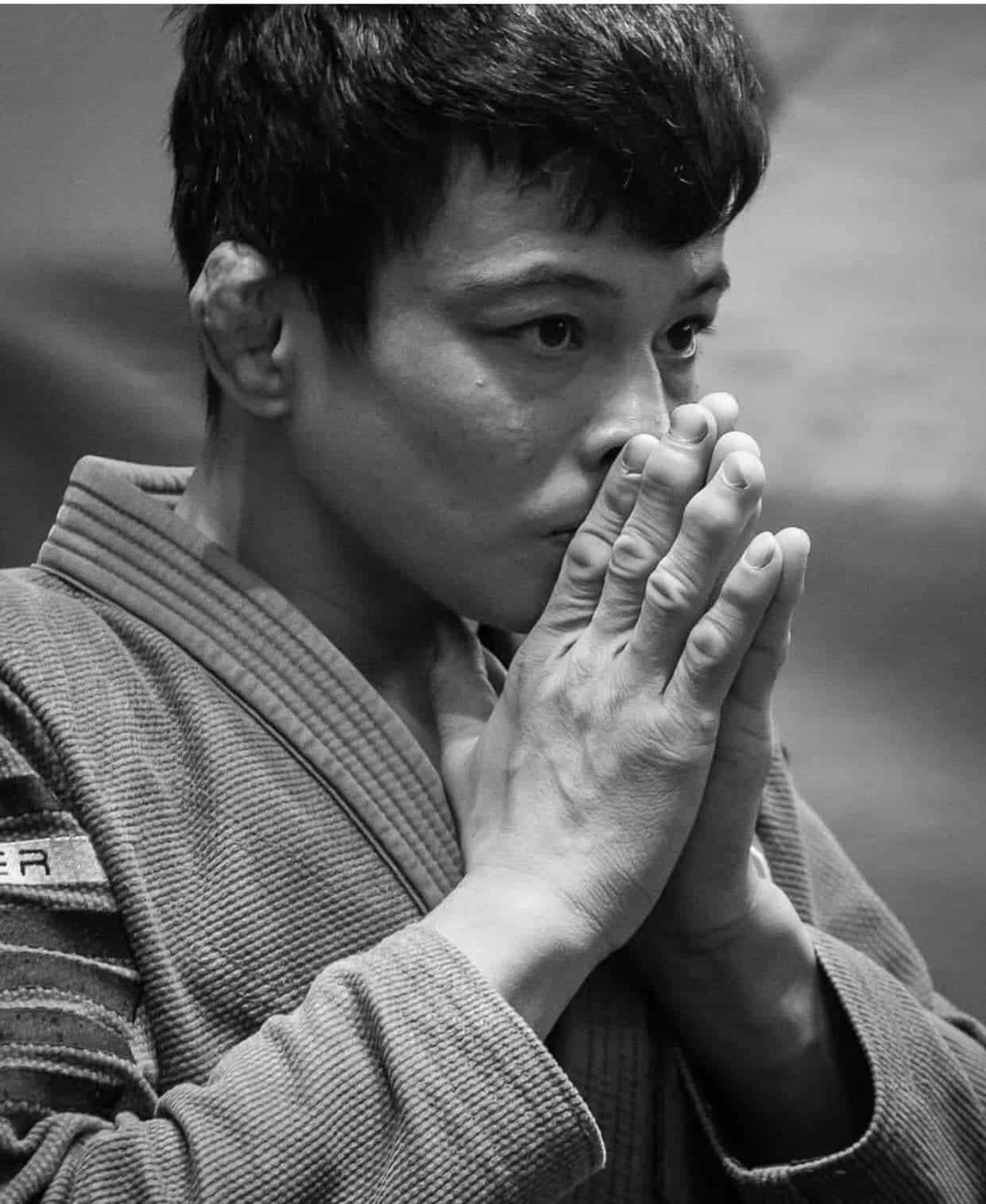
Is Jiu Jitsu hard on joints? Yes, Jiu Jitsu is hard on the joints. Unfortunately Jiu Jitsu can cause chronic injuries such as arthritis particularly in the fingers and knee. It is common to feel joint ache after a hard Jiu Jitsu session. To avoid hurting your joints you need to use correct technique and regulate the intensity you train at.
Can You Do BJJ Everyday?
Can you do BJJ everyday? Yes, you can do BJJ everyday. However you will not able to train hard everyday. You will have organize your training where you can low, medium and high intensity days to reduce the risk of injury and to give your body time to recover.
If you want to train BJJ everyday a good training intensity would be 2 light days, 3 medium days and 2 hard days. This will allow you to train BJJ everyday without destroying body. Your body should be able to recover from this schedule. However if you are struggling to recover then you may need to increase the number of light days.
Is Jiu Jitsu High Impact?
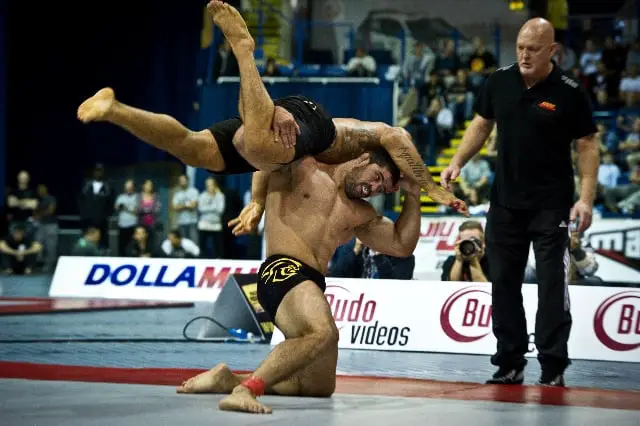
Is Jiu Jitsu high impact? Jiu Jitsu can be both high and low impact depending on how you train. Technical drilling is usually low impact and performed at a slow to medium pace. Whereas sparring is high impact and is performed at a high pace. Nearly all injuries in BJJ occur during the high impact phase of training (sparring).
Jiu Jitsu is a contact combat sport. It is a high intensity sport where you can expect to burn 500-700 calories an hour. However only a small portion of BJJ training can be considered high impact. A typical Jiu Jitsu session will start with a low impact 15-3o mins warm up then the main portion of the training will be based around technical drilling which lasts between 30-60 mins and is low to medium impact. Training will conclude with 15-30 mins of sparring which is considered to high impact training where athletes have mock matches and attempt to submit each other while both athletes offer varying levels of resistance.
Conclusion
You can train BJJ with bad knees as long as you can perform basic athletic movements without too much discomfort. If you do decide to train BJJ you just need to be careful. I recommend you avoid the standing position where knee injuries are very common. Make sure you warm and stretch before training, use proper technique and don’t try to push your knees too hard. You can also wear a knee brace to give you some extra support. If you a bit careful you should be able to train BJJ. Good luck.
